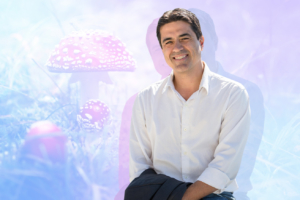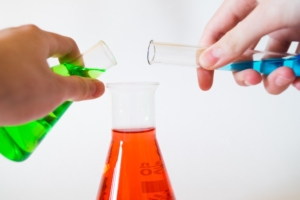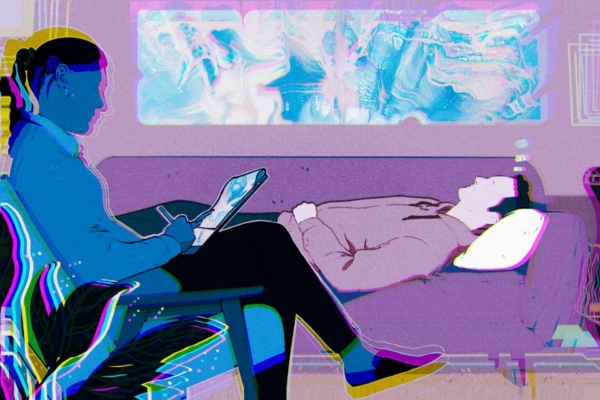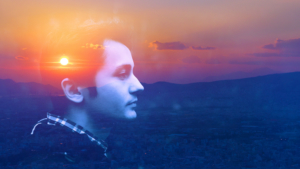
Have you ever found yourself wondering about the differences between DMT and psilocybin? If so, join the growing crowd of people captivated by these powerful hallucinogens as they explore their psychedelic powers. Both DMT and psilocybin have been gaining popularity in recent years as people seek to expand their minds for self-discovery, healing, and spiritual exploration; but just what is it that makes them unique from one another?
Psilocybin vs. DMT
To understand the nuances of psilocybin and DMT, it is essential to examine the primary chemical similarities between them. Although psilocybin and DMT both belong to the tryptamine family, which incorporates natural neurotransmitters like serotonin as well as numerous psychedelic substances in plants and fungi, there is one noteworthy difference between them: their metabolic characteristics.
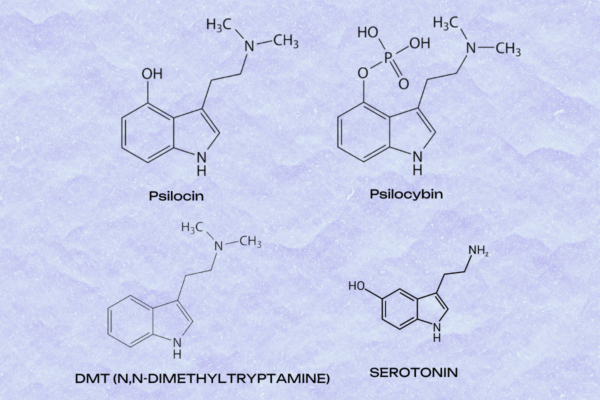
Psilocybin
There are hundreds of mushroom species carrying the powerful psychedelic compound known as psilocybin. However, it appears that the real source of psychoactive effects on the brain does not lie within psilocybin itself, but rather its metabolite: psilocin. Consequently, researchers believe that it is this altered form of psilocybin that triggers serotonin 2A receptors (5-HT2ARs) to generate psychedelic effects.
DMT
N,N-Dimethyltryptamine (DMT) also known as ” The Spirit Molecule” shares almost identical chemical makeup with psilocin. It is believed that DMT also produces its hallucinogenic effects by activating the 5-HT2A receptor. The neurotransmitter serotonin has the power to uplift and balance your emotional state. When psychedelics such as DMT or psilocin interact with the serotonin-receptor, it can lead to an enhanced sense of euphoria.
DMT and psilocybin are not just about serotonin – you can add oxytocin, the so-called ‘love hormone’ to the mix. Believed to influence social bonding, maternal behavior and feelings of warmth, oxytocin interacts with serotonin receptors when it comes to regulation. As such, DMT and psilocybin may also play a part in how levels of oxytocin are regulated – something quite remarkable considering these compounds have traditionally been associated with serotonin alone. In any case, this only increases our appreciation for DMT and psilocybin as powerful psychoactive compounds that extend far beyond mere serotonergic activity.
Route of Administration
Though both psychedelics have quite a few similarities, psilocybin and DMT contrast in how they are ingested.
For the most part, a large majority of people take psilocybin orally in dried mushroom form. This can be done through chewing them directly, consuming edibles or purchasing capsules.
Conversely, DMT is usually inhaled either by smoking or vaporizing it, typically using a glass freebase pipe (sometimes referred to as a “crack pipe”). For a different smoking experience, some psychonauts also use a cannabis pipe or bong and try the “sandwich” technique.
Although, there are some commonalities between the two; both can be ingested in liquid form. For a longer-lasting DMT experience, users consume ayahuasca brew that contains the active chemical along with other natural components. As for psilocybin mushrooms, those seeking a more direct approach have options such as soothing teas or strong lemon tek shots. Moreover, in some clinical trials, researchers may administer psilocybin and DMT intravenously. No matter which route you choose with either DMT or psilocybin, make sure proper safety precautions are taken. After all, knowledge is power.
Nature Expresses Psilocybin and DMT in Unique Ways
While nature is home to both DMT and psilocybin. DMT exists in most general groups of plants, in the pineal gland of rats, as well as in the human body, while psilocybin is found in an array of mushroom species.
DMT can be extracted from a variety of plants, including Mimosa hostilis and Psychotria viridis, which are often used when making ayahuasca. Ayahuasca, an Amazonian psychedelic concoction known by various names across the region – such as ayahuasca in Peru, yagé in Colombia and Ecuador, or caapi in Brazil – is brewed through boiling together Banisteriopsis caapi vine stems with either Psychotria viridis leaves or Diplopterys cabrerana plantings. This concoction contains both DMT-containing and an MAOI-containing plant material, which makes it possible to take the psychoactive compound orally.
Mushrooms exist in their own exclusive kingdom, unrelated to both plants and animals. They are uniquely classified as fungi. Mother Nature has gifted us with an incredible diversity of mushrooms, nearly 200 of them containing psilocybin. From lush forests to urban parks and grasslands, these ‘magic’ mushrooms can be found in various climates around the globe – even warmer tropical zones. As the world continues to discover more about fungus, it is becoming increasingly clear how incredible and fascinating these organisms are. They are more closely related to humans than plants, humans have been eating them since the dawn of human history, they use electricity to communicate in a way similar to human language and they can be good for your mental health. If you’re searching for the ultimate psilocybin mushroom-foraging spots in America, then look no further. We’ve got all of the best locations right here.
The Trip
Duration
DMT and psilocybin are incredibly different when it comes to the psychedelic experience they offer. DMT is like a sprint, allowing its users to have a quickie peak-based experience — at about 5 to 20 minutes in duration — that is more easily fitting into one’s daily activities, hence why DMT obtained the nickname “businessman’s trip” in the 60s.
Meanwhile, psilocybin mushrooms take their users on an extended psychedelic journey with 4 to 8 hours involved – though of course this all depends on the dosage. So indeed these two are different beasts. Both offer incredible mystical experiences and perspectives, depending on what you’re looking for.
Experience
DMT and psilocybin both offer a psychedelic experience unlike anything else.
While both compounds are often used for spiritual purposes, psilocybin is particularly known to offer a deeper and gentler introspective experience. During this journey, many individuals enter the state of consciousness with questions about life that need answers and clarity. Psilocybin mushrooms are reported to bring awareness of suppressed memories and thought patterns which may be linked to larger themes in life along with profound connections to nature. Although full hallucinations, which are hard to differentiate from reality, may occur when taking high doses of psilocybin, it is not the usual case.
DMT has been gifted the name “The Spirit Molecule” for its ability to evoke profound spiritual insights. Participants tend to feel released from any limitations of ego-consciousness and instead embrace states of ultimate tranquility, blissfulness, independence, and joy. Vivid and profound visions are usually paired with audio-visual hallucinations. Most notably, users report travelling through a DMT tunnel filled with entities known as machine or DMT elves. Many other comparable out of this world journeys are also associated with DMT voyages including talking with angels, spiritual guides or extraterrestrials, being transported to mystical planes of existence and more. The individual stories of DMT trips across such an enormous plethora of phenomena suggest there may be millions of realities that exist beyond the boundaries of our conceptual understanding.
To Trip or Not to Trip? That is the Question.
Recent studies looking into psychedelic-assisted therapy for the treatment of various mental illnesses are now uncovering the potential to break apart the psychedelic experience into its individual components, offering new pathways in biotech and academia. As we venture further into these uncharted concepts, a few questions continually arise: Is the “trip” important to the psychedelic experience? Will psychedelics still be effective treatment without the trip?
Psychonauts – a term popularized by psychedelic enthusiasts – believe that the psychedelic journey can offer a wealth of therapeutic benefits. After all, many life-changing revelations have been uncovered during these psychologically intense experiences; leaving extra time to ponder the inner workings of one’s mind can help identify and process suppressed trauma, break down false mental barriers, and challenge any developing negative attitudes or behaviors. In other words, if you’re seeking lasting therapeutic value from your trip, enjoy the psychedelic experience and take your time.
In contrast, others argue that DMT and psilocybin’s neurochemical and neurological effects can be enough in their own right to reduce symptoms of depression, anxiety and PTSD and increase wellbeing. In other words, a psychedelic experience is not essential to benefit from the psychedelic itself. The main arguments is that non-hallucinogenic compounds offer groundbreaking potential for those in need of access to better treatments, especially for individuals suffering from conditions where hallucinations may be undesired. This could pave the way towards improved patient care and greater availability than what is available with current models. Besides, eliminating the need for an appointment allows psychedelics to become available to more people.
Who’s right?
It depends. Psychedelics are revered and sacred, yet it appears that the United States is more interested in robbing them of their spiritual qualities to create another cash-cow for Big Pharma. However, does this make it right?
In a world so often divided and broken into pieces, shouldn’t there be some aspects that remain unaltered? After all, isn’t this the very essence of the psychedelic experience – to break free from rigid confines and explore something wholly new?
Adverse Effects
Be warned, consuming psilocybin mushrooms and DMT can cause various adverse effects. While the psychological effects such as feelings of disorientation, a lack of muscle coordination, and an absence of reality can be difficult to handle, physical effects like nausea and headaches are also common when using these drugs. Psilocybin in particular can result in an uncomfortable stomach discomfort as it is hard for your body to digest. However, with the right set and setting before usage, and alternative consumption methods such as lemon tek, bad trips or serious medical complications can usually be avoided.
Risks
It is also important to note that psychedelics are not suitable for all individuals. As with any unregulated mind-altering substances, there are certain risks involved. For example, those who suffer from cardiovascular illnesses or psychosis should avoid taking them; likewise, medications may interfere with the effects of psychedelic drugs too. Moreover, one must take extra caution when consuming mushrooms or DMT as they can be easily mistaken for other unsafe compounds. Thus it is always best to tread carefully and do proper research before engaging in this type of activity.
Research
Psilocybin Research
Abundant studies demonstrate the healing effects of psilocybin therapy in the treatment of anorexia, tobacco addiction, alcohol use disorder, weight gain, major depressive disorder, treatment-resistant depression and more. An array of companies including Compass Pathways, Cybin, Usona Institute, Numinus, TRYP Therapeutics and Core One Labs are actively researching the potential therapeutic applications of psilocybin.
Among these companies, Compass Pathways stands out for its remarkable progress. Compass Pathways is taking a major step forward by launching two Phase 3 trials in the quest to treat Treatment-Resistant Depression (TRD) with psilocybin-assisted therapy. The organization will be utilizing their own patented synthetic version of psilocybin, known as Comp360, for this purpose. These two upcoming clinical trials will be the biggest of their kind, with a total of 946 participants. This is an unprecedented milestone for psychedelic medicine research. Pending a successful outcome, Compass will collaborate with the FDA to potentially approve psilocybin for the treatment of TRD as soon as 2025.
DMT Research
Despite much curiosity, the research on DMT’s medicinal benefits is still in its infancy. However, some companies are investigating it’s potential to treat depression and stroke recovery, and one study has demonstrated that DMT can increase neuron growth by 40%.
One company in particular, Small Pharma, recently embarked on an ambitious venture; they have initiated the first Phase 2a DMT trial in history for the treatment of Major Depressive Disorder. As mentioned above, DMT provides effects similar to, yet more intense than those of psilocybin. With its drastically reduced duration of effects, DMT has the potential to be a groundbreaking tool in treating depression – an advantage that psilocybin cannot provide. Not only would patients receive just as effective treatment with DMT, but it could also save money since therapeutic personnel and support staff wouldn’t be required to work an entire day per patient.
The potential benefits of psilocybin and DMT are becoming more widely recognized, with individuals reporting life-changing experiences from taking these psychedelics. Pharmaceutical companies have taken great notice of this growing trend, scrambling to develop their own versions. They’re competing to stay a jump ahead in the game, vying to take the lead in providing new products and services. With this surge in interest, pharmaceutical companies are researching widely, striving to craft offerings that consumers will welcome with enthusiasm. As they work hard behind the scenes, consumers can expect an influx of different versions as these companies rush to meet the call for change.
DMT vs. Psilocybin Legal Status in North America
Canada
Despite psilocybin being openly sold in certain cities, it is still classified as a controlled substance under Canada’s regulations, meaning it remains illegal to produce, possess and sell psilocybin. In British Columbia, the federal government announced plans to decriminalize personal possession of certain controlled substances by January 31, 2023. However, psilocybin has not been included in this move, leaving the legal status untouched.
Legal access to psilocybin is limited to individuals who have received an exemption though Health Canada’s s. 56 or through the Special Access Program (SAP). All applications are handled on a case-by-case basis. The Controlled Drugs and Substances Act firmly prohibits DMT listed under Schedule III. However, like psilocybin, it can be legally accessed in certain circumstances when a s. 56 exemption request is granted by Health Canada.
In contrast to psilocybin, however, some may also have legal access to DMT for religious purposes. Numerous ayahuasca churches have been granted official permission to import and consume the popular daime tea.
USA
Navigating the legality of psychedelic substances like psilocybin and DMT in the United States can get tricky. In accordance with regulations set forth by the Controlled Substances Act, both psilocybin and N,N-Dimethyltryptamine are classified as Schedule 1 drugs. As of January 2023, most states have maintained their stance on complete illegality. However, there are a with a handful of exceptions.
Colorado recently became the second state after Oregon to legalize psilocybin therapy. In 2023, New York legislators have taken the initiative and filed a bill with the aim to legalize certain natural psychedelics including DMT, ibogaine, mescaline, psilocybin and psilocin. The introduction of the new bill is a clear indication that groundbreaking changes to psychedelics reform will take place in 2023, largely due to the widespread decriminalization efforts seen across America.
So there you have it. The cliff notes on psilocybin and DMT: where they come from, what they’re made of, and how researchers are studying their potential to treat mental health conditions. As always, be sure to do your own research before consuming any substances—including psilocybin and DMT—and make sure they’re legal in your area.
Disclaimer: Psychedelic Spotlight does not condone the use of illegal substances. The purpose of this article is for educational and harm reduction purposes only. If you suffer from a medical or mental condition, please consult with your doctor before taking any substance.

